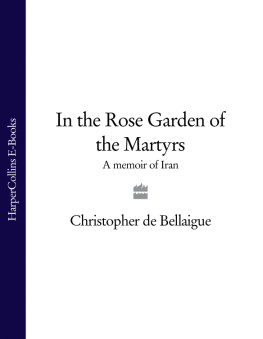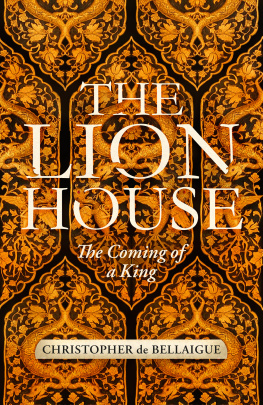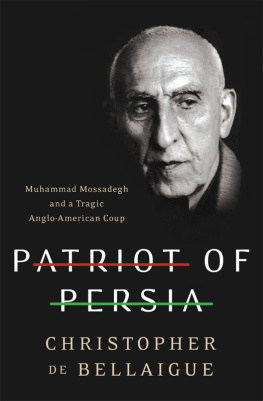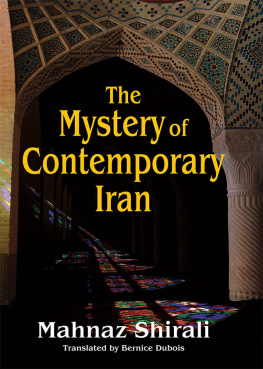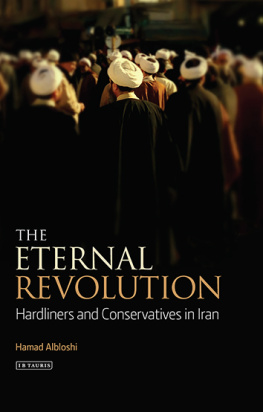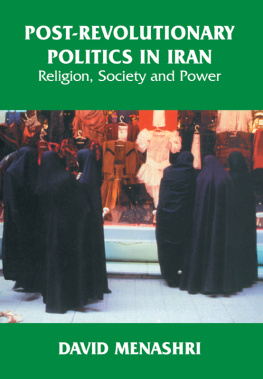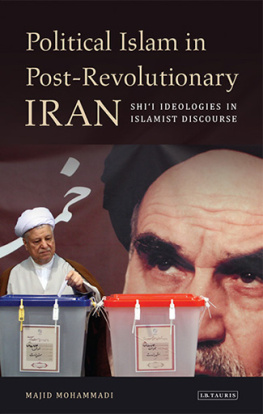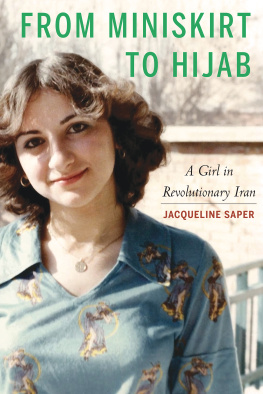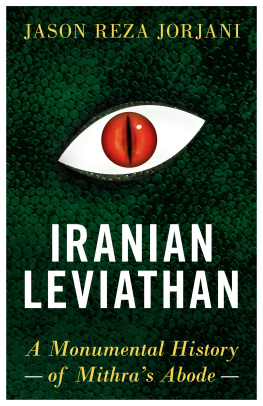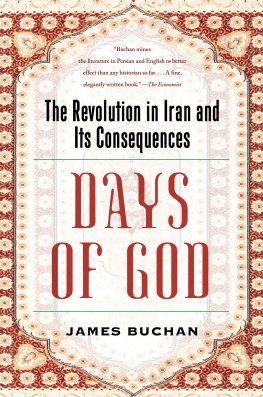Table of Contents
Landmarks
Each day more than yesterday,
and less than tomorrow
I have used the Persian transliteration for Arab names when they are found in an Iranian context, such as the mourning ceremonies in Tehran for the Imam Hossein.
Abdolrahman, Hassan: American convert to Islam who carried out an assassination on behalf of the Islamic Republic and then took refuge in Iran.
Alavi Tabar, Ali-Reza: Islamic revolutionary and holy warrior in the war against Iraq who later became an influential figure in Muhammad Khatamis reform movement.
Amini, Reza: subordinate of the famous Isfahani commander Hossein Kharrazi.
Bani-Sadr, Abolhassan: the Islamic Republics first president, who later revolted against Ayatollah Khomeini and was forced into exile.
Bazargan, Mehdi: provisional prime minister after the Revolution, who resigned during the US hostage crisis.
Emami, Saeed: senior Intelligence Ministry figure of the 1990s, alleged mastermind of the serial murders of dissidents.
Forouhar, Darioush: a minister after the Revolution, he fell out with the religious establishment and was one of the final victims of the serial murders.
Forouhar, Parastu: justice-seeking daughter of Darioush Forouhar.
Ganji, Akhar: investigative journalist, jailed for his part in exposing the serial murders of dissidents in the 1990s.
Ghorbanifar, Manuchehr: arms dealer involved in the Iran Contra scandal.
Hashemi, Mehdi: fanatical revolutionary whose rift with the establishment led to the exposure of the Iran Contra scandal.
Hossein b. Ali: third Shia Imam, who was killed at Karbala in 680.
Khalkhali, Sadegh: revolutionary official, Irans hanging judge.
Khamenei, Ayatollah Ali: second president of the Islamic Republic and Khomeinis successor as Supreme Leader, or Guide, of the Islamic Revolution.
Kharrazi, Hossein: inspirational Isfahani war commander.
Khatami, Muhammad: elected president in 1997, he failed to implement most of the democratizing reforms that he envisaged.
Khomeini, Ayatollah Ruhollah: father of the Islamic Revolution and the Islamic Republics first Supreme Leader, or Guide.
Makhmalbof, Mohsen: revolutionary film-maker.
Montazeri, Ayatollah Hossein-Ali: Khomeinis designated successor, stripped of the succession for being too independent.
Muhammad Mossadegh: controversial prime minister who nationalized Irans oil industry and was deposed, in a CIA-run coup, in 1953.
Pahlavi, Muhammad-Reza: the final Shah of Iran, deposed in the 1979 Revolution.
Pahlavi, Reza: the founder of the Pahlavi dynasty, the Shahs father.
Rafii, Muhammad-Ali: Isfahani cleric, subordinate of Hossein Kharrazi.
Rafsanjani, Ali-Akhar Hashemi: president between 1989 and 1997.
Rezai, Mohsen: Revolutionary Guards commander during the Iran Iraq war.
Shirazi, Sayyad: army chief during the Iran-Iraq war.
Teyyeb, Haji-Rezai: Tehran mafioso.
Zarif, Sadegh: revolutionary, seminarian and, latterly, film-maker.

CHAPTER ONE
Karbala
Why, I wondered long ago, dont the Iranians smile? Even before I first thought of visiting Iran, I remember seeing photographs of thousands of crying Iranians, men and women wearing black. In Iran, I read, laughing in a public place is considered coarse and improper. Later, when I took an oriental studies course at university, I learned that the Islamic Republic of Iran built much of its ideology on the publics longing for a man who died more than thirteen hundred years ago. This is the Imam Hossein, the supreme martyr of Shia Islam and a man whose virtue and bravery provide a moral shelter for all. Now that Im living in Tehran, witness to the interminable sorrow of Iranians for their Imam, I sense that Im among a people that enjoys grief, relishes it. Iran mourns on a fragrant spring day, while watching a ladybird scale a blade of grass, while making love. This was the case fifty years ago, long before the setting up of the Islamic Republic, and will be the case fifty years hence, after it has gone.
The first time I observed the mourning ceremonies for the Imam Hossein, I was reminded of the Christian penitents of the Middle Ages, dragging crosses through the dust and bringing down whips across their backs. In modern Iran, too, there is self-flagellation and the lifting of heavy things sometimes a massive timber tabernacle to represent Hosseins bier as an expression of religious fervour. The Christian penitents were self-serving; calamities such as the Black Death provoked a desire to atone, to save oneself and ones loved ones from divine retribution. Irans grieving does not have this logic. This is no act of atonement, but a sentimental memorial. Iranians weep for Hossein with gratuitous intimacy. They luxuriate in regret as if, by living a few extra years, the Imam might have enabled them to negotiate the morass of their own lives. They lick their lips, savour their misfortune.
I see Hossein alongside Tehrans freeways, his name picked out in flowers that have been planted on sheer green verges. I see his picture on the walls of shops and petrol stations, printed on the black cloths that are pinned to the walls of streets. The conventional renderings show a superman with a broad, honest forehead and eyes that are springs of fortitude and compassion. A luxuriant beard attests to Hosseins virility, but his skin is radiant like that of a Hindu goddess. He wears a fine helmet, with a green plume for Islam, and holds a lance. I once asked an elderly Iranian woman to describe Hosseins calamitous death. She spoke as if she had been an eyewitness to it, effortlessly recalling every expression, every word, every doom-laden action. She listed the women and children in Hosseins entourage as if they were members of her own family. She wept her way through half a dozen Kleenexes.
Every Iranian dreams of going to the town of Karbala, the arid shrine in central Iraq that was built at the place where Hossein was martyred. I went there myself, the camp follower of American invaders, and visited the Imams tomb. Inside a gold plated dome, Iraqis calmly circumambulated a sarcophagus whose silver panels had been worn down from the caress of lips and fingers. They muttered prayers, supplications, remonstrations. Suddenly, the peace was shattered by moans and the pounding of chests, splintered sounds of distress and emotion. Five or six distraught men had approached the sarcophagus. One of them was half collapsed, his hand stretched towards the Imam; the others shoved and slipped like landlubbers on a pitching deck. My Iraqi companion curled his lip in distaste at the melodrama. Iranian pilgrims, he said.
It all goes back to AD 632, when the Prophet Muhammad died and All, his cousin and son-in-law, was beaten to the caliphate, first by Abu Bakr, the Prophets father-in-law, and then by Abu Bakrs successors, Omar and Osman. Ali gave up political and military office, and waited his turn, and the modesty and piety of the Prophets time was supplanted, according to some historians, by venality and hedonism. After twenty-five years, following Osmans brutal murder, Ali was finally elected to the caliphate. But his rule, although virtuous, lasted only until his murder five years later and gave rise to a rift between his followers and Osmans clan, the Omayyids. The origin of the rift was a dynastic dispute, between supporters of the Prophets family, represented by Ali, and the Prophets companions, represented by the first three caliphs. It prefigured a rift that continues, between the Shias literally, the partisans of Ali and the Sunnis, the followers of the

